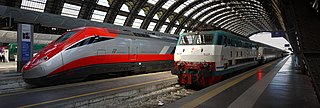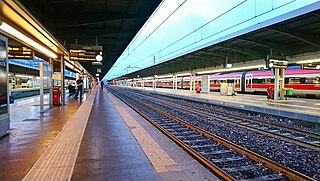Contents
- Abruzzo
- Aosta Valley
- Apulia
- Basilicata
- Calabria
- Campania
- Emilia-Romagna
- Friuli-Venezia Giulia
- Lazio
- Liguria
- Lombardy
- Marche
- Molise
- Piedmont
- Sardinia
- Sicily
- Trentino-South Tyrol
- Tuscany
- Umbria
- Veneto
- See also
| | This section is empty. You can help by adding to it. (March 2024) |
| | This section is empty. You can help by adding to it. (March 2024) |
| | This section is empty. You can help by adding to it. (March 2024) |
| | This section is empty. You can help by adding to it. (March 2024) |
| | This section is empty. You can help by adding to it. (March 2024) |
| | This section is empty. You can help by adding to it. (March 2024) |

The Italian Riviera or Ligurian Riviera is the narrow coastal strip in Italy which lies between the Ligurian Sea and the mountain chain formed by the Maritime Alps and the Apennines. Longitudinally it extends from the border with France and the French Riviera near Ventimiglia eastwards to Capo Corvo which marks the eastern end of the Gulf of La Spezia and is close to the regional border between Liguria and Tuscany. The Italian Riviera thus includes nearly all of the coastline of Liguria. Historically the "Riviera" extended further to the west, through what is now French territory as far as Marseille.

Milano Centrale is the main railway station of the city of Milan, Italy, and is the second railway station in Italy for passenger flow and the largest railway station in Europe by volume.

The Italian railway system is one of the most important parts of the infrastructure of Italy, with a total length of 24,227 km (15,054 mi) of which active lines are 16,723 km. The network has recently grown with the construction of the new high-speed rail network. Italy is a member of the International Union of Railways (UIC). The UIC Country Code for Italy is 83.
Rocca may refer to:

Giacinto Brandi was an Italian painter from the Baroque era, active mainly in Rome and Naples.

The Policlinico of Milan also known as Ospedale Maggiore di Milano or Ca' Granda Ospedale Maggiore Policlinico, is the public district general hospital in Milan, It is one of the oldest hospitals in Italy, founded by Duke Francesco Sforza in 1456. Today it is a modern hospital with 900 beds, with wards for adults, pregnant women and children. During the first COVID-19 breakout in March 2020, 300 of those beds were readapted for COVID-19 patients.

Filippo Abbiati (1640–1715) was an Italian painter of the early-Baroque period, active in Lombardy and Turin, together with Andrea Lanzani and Stefano Maria Legnani, he was a prominent mannerist painters from the School of Lombardy. Born in Milan, he was a pupil of the painter Antonio Busca. Alessandro Magnasco was one of his pupils along with Pietro Maggi and Giuseppe Rivola. Ticozzi claims he trained, along with Federigo Bianchi, with Carlo Francesco Nuvolone. Along with Bianchi, he painted the cupola of Sant'Alessandro Martire in Milan. Abbiati also painted a St. John preaching in the Wilderness for a church in Saronno.

The Sant’Orsola-Malpighi Polyclinic is a public research hospital and district general hospital in Bologna. Sant’Orsola-Malpighi Polyclinc is the largest district general hospital in Italy, and the first of the four public hospitals of the city of Bologna.

Venezia Mestre railway station is a junction station in the comune of Venice, Italy. It is located within the mainland frazione of Mestre, and is classified by its owner, Rete Ferroviaria Italiana, as a gold category station.

Antonio Brilla was a prolific Italian sculptor and ceramic artist mainly active in Liguria. He travelled in 1838 to Florence to study masterworks, where he met Giovanni Duprè and Lorenzo Bartolini. He returned to Savona to establish a studio. Two of Antonio's sons also were artists.

Amico Agnifili was an Italian Roman Catholic bishop and cardinal.
The following is a hierarchical outline for the Italian Army at the end of the Cold War. It is intended to convey the connections and relationships between units and formations.